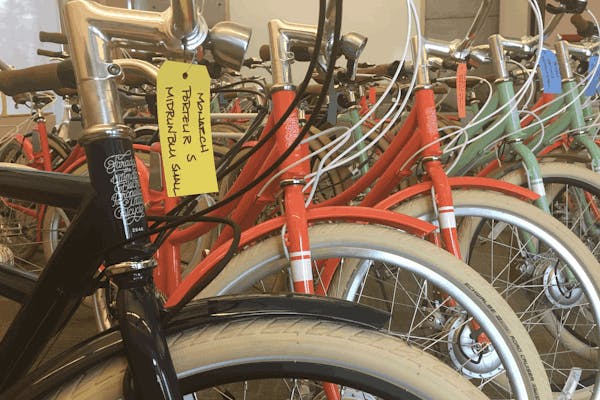
Getting kids connected
Collaborations Help Bridge the Digital Divide
Isaiah Lopez, a bright and eager student at Freedom Elementary School in Watsonville, was struggling to keep up with his classes. Without an internet connection at home, there was no way for him to participate in distance learning during shelter-in-place. An hour south of Silicon Valley, thousands of students like Isaiah are being left behind.
Last March, Superintendent Dr. Michelle Rodriguez and her team at Pajaro Valley Unified School District managed to get 20,000 Chromebooks and 4,000 hotspots to their students. The laptops ensured every student had a device to learn on, but unfortunately, the hotspots weren’t always sufficient to connect to the internet, especially in the more rural areas of her district. A bigger change in infrastructure and some creative collaborations would need to happen to get students access to distance learning.

Students of color most excluded from connectivity
The lack of internet access is deepening a chasm in educational equity within Santa Cruz County. Overall, the state of California estimates that 21% of students (1.2 million) are unconnected. 71% of those students are Black and Latinx. According to the Central Coast Broadband Consortium Santa Cruz is graded a C- on it’s California Broadband Infrastructure Report Card. As the state data shows, below average infrastructure impacts low-income families and people of color the most.
Without reliable internet access, students risk missing class sessions and a communication breakdown with their teachers. They aren’t able to access online resources, connect with other students, or have an adequate amount of time to complete assignments.
Market forces drive infrastructure
Building out adequate internet infrastructure is costly and complicated. Areas which don’t meet a profit margin for large providers are typically disregarded and have become internet “deserts.” Those market forces have meant many working class and working poor families never get the opportunity to tap into a reliable connection. Local internet provider Cruzio, the Community Foundation, and education leaders weren't content to let some students get shut out from broadband while waiting in vain for business dynamics to change. It sparked new thinking. Could giving from local donors close the gap so low-income families could access broadband now, while giving Cruzio more time to eventually sign up enough customers to make their subsidies feasible?

New partnerships for urgent times
Cruzio started work immediately last spring to offer subsidized internet to low-income students in Santa Cruz County. But the demand for service and a lack of available infrastructure quickly outpaced Cruzio’s ability to fill the need. A unique partnership between Cruzio Internet, Community Foundation Santa Cruz County, The County Office of Education (COE), and Pajaro Valley Unified School District was formed and from it, Equal Access Santa Cruz County was born.
With the help of Community Foundation donors and in coordination with the COE and PVUSD, Cruzio installed equipment on four Watsonville school buildings that provides coverage for up to 600 households in the surrounding neighborhoods which were either considered underserved or only had options which were unaffordable to low-income residents.
“This project bridges the digital divide for the impacted families by delivering true parity, the same internet access that is available to all families, not a slowed down, throttled, capped, limited version.”
- Chris Frost, Cruzio’s Director of Infrastructure and Technology

From internet deserts to fertile ground for learning
As the COVID pandemic surges with months of distance learning looming ahead, Equal Access Santa Cruz County is ready for the challenge. Immediate plans are underway to build internet connections at the Buena Vista Migrant Camp and offer subsidized service as well as additional plans to fill gaps to affordable internet access in the Live Oak School District.
Thanks to Community Foundation donors and other contributors, we’ve raised nearly $600,000 to help prevent learning loss for low-income students of color.
Meanwhile, Isaiah is connected and back in class. “Now that we have the internet with Cruzio, I am able to communicate with my teacher all the time and do my school work. I no longer have glitches when I am participating in class.”


